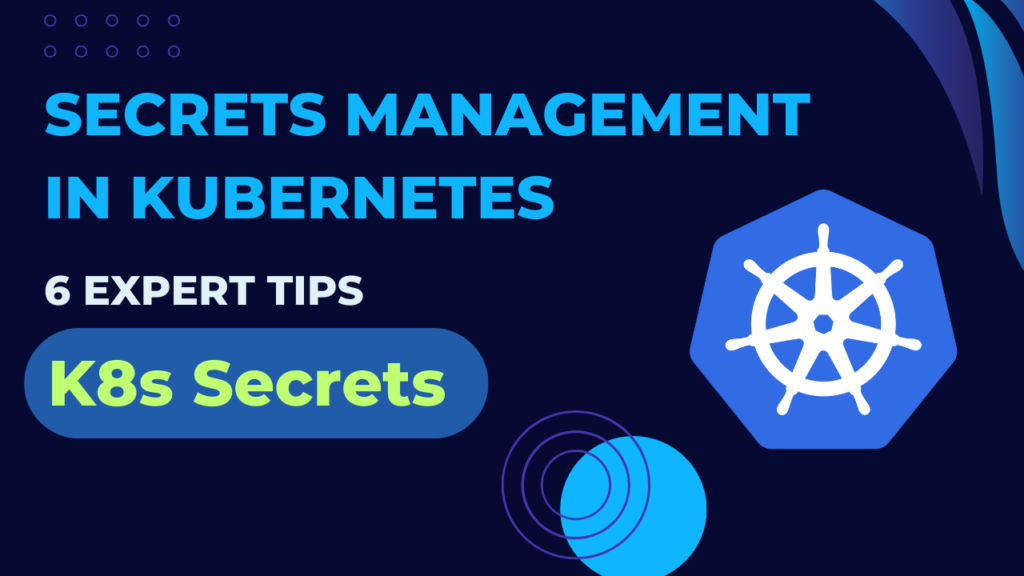
In the fast-paced world of cloud-native computing, Kubernetes has emerged as the go-to platform for managing containerized applications. However, with the increasing complexity of applications and the growing sensitivity of data, securing Kubernetes deployments has become paramount. One of the key aspects of Kubernetes security is secrets management.
What are Secrets?
Secrets are sensitive pieces of information, such as passwords, API keys, and encryption keys, that are essential for applications to function properly. In Kubernetes, secrets are stored as objects and can be injected into pods at runtime. This approach allows developers to decouple secrets from their application code, enhancing security and flexibility.
Why is Secrets Management in Kubernetes Essential?
The importance of Secrets Management in Kubernetes cannot be overstated. Consider the following real-world scenarios:
- A developer accidentally commits API keys to a public repository, exposing sensitive data to unauthorized parties.
- An attacker gains access to a pod’s filesystem, retrieving passwords and other sensitive information.
- A malfunctioning pod inadvertently logs sensitive data to the console, putting your organization’s security at risk.
These scenarios highlight the critical need for effective Secrets Management in Kubernetes. By implementing robust measures to protect sensitive data, organizations can safeguard their applications and maintain compliance with industry standards.
6 Expert Tips for Secrets Management in Kubernetes
- Use a dedicated secrets management tool: Don’t store secrets directly in your application code or in Kubernetes configuration files. Instead, use a dedicated secrets management tool like etcd or HashiCorp Vault. These tools provide secure storage and encryption of secrets, as well as access control mechanisms.
- Automate secrets rotation: Secrets should be rotated regularly to reduce the risk of compromise. Automate secrets rotation using a tool like Conjur or Vault to ensure that secrets are always fresh and up-to-date.
- Minimize access to secrets: Limit access to secrets to only the applications and users that absolutely need them. Use role-based access control (RBAC) to enforce access restrictions and minimize the blast radius of potential security breaches.
- Avoid storing secrets in plain text: Never store secrets in plain text, even in your local development environment. Use secure methods like encryption and obfuscation to protect secrets from unauthorized access.
- Audit secrets access: Regularly audit secrets access to detect anomalies and potential security threats. Use auditing tools to track who accessed which secrets and when, and investigate any suspicious activities.
- Keep your secrets management infrastructure up to date: Regularly update your secrets management tools and infrastructure to ensure you’re using the latest security patches and best practices.
Real-Time Scenarios
To illustrate the importance of secrets management, consider these real-time scenarios:
- A developer accidentally commits a password to a public repository, exposing it to anyone with access to the repository.
- An attacker gains access to a Kubernetes cluster and exfiltrates API keys, allowing them to manipulate critical systems.
- A disgruntled employee leaks sensitive customer data stored in a Kubernetes secret, causing a major data breach.
These scenarios highlight the potential consequences of poor secrets management. By following the expert tips outlined above, you can significantly reduce the risk of such incidents and safeguard your Kubernetes environment.
Thanks for reading! I hope you found this post helpful. If you have any questions, please leave a comment below or you can connect on below platforms (Youtube & telegram) for more “To The Point” Learning.
Telegram: https://t.me/t3pacademy & https://t.me/LearnDevOpsForFree
Youtube: https://www.youtube.com/@T3Ptech